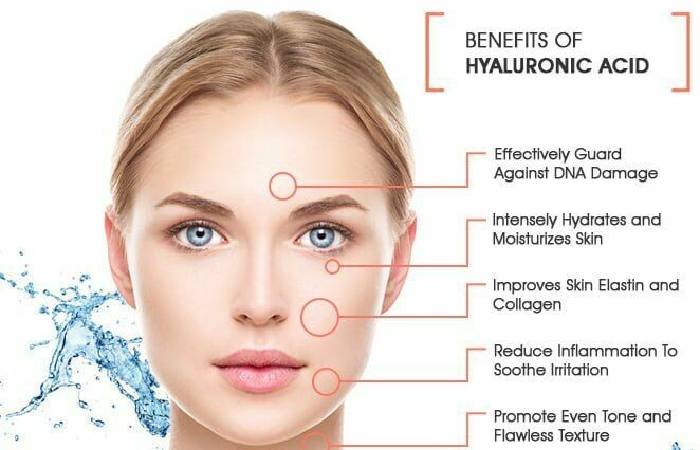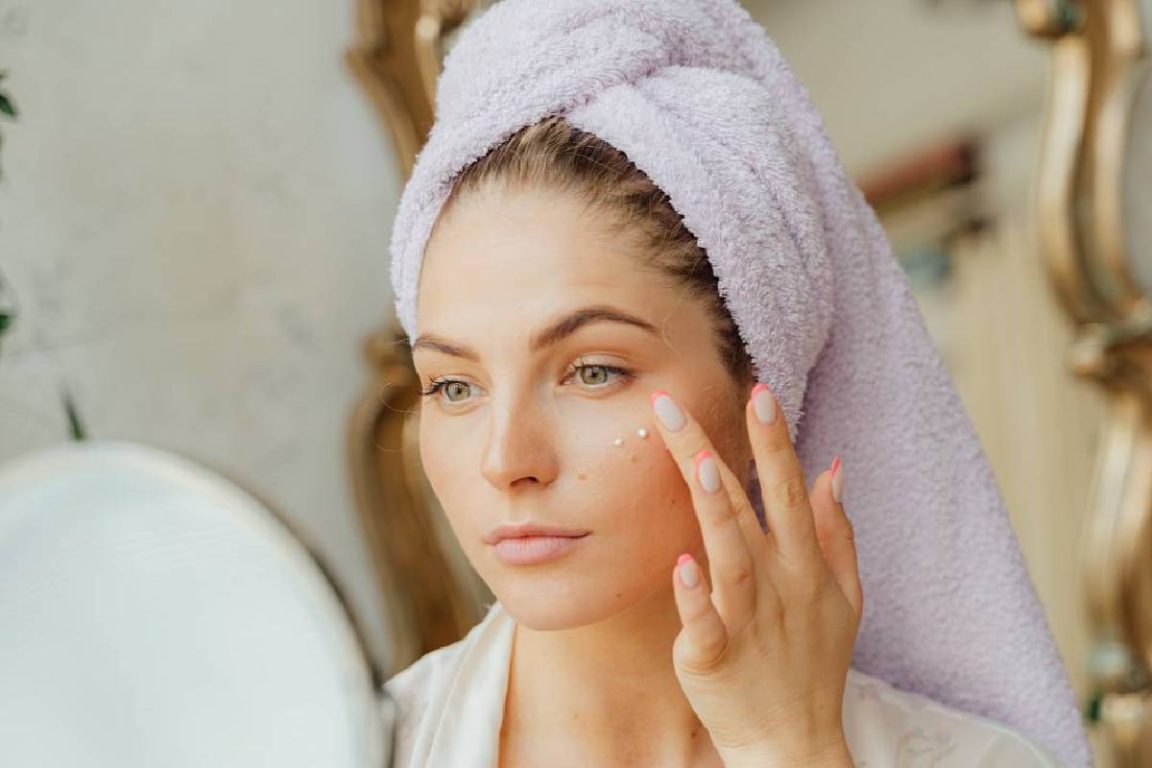Moisturize After Applying Hyaluronic Acid – Hyaluronic Acid is a popular ingredient in skincare and is considered an MVP in the skincare world. It is produced by our body naturally to preserve our skin’s moisture levels. But daily, our skin goes through several issues, such as dust, pollutants and environmental attackers. As a result, our skin’s moisture levels tend to decrease.
Although hyaluronic acid is a complete ingredient that makes your skin soft, smooth, supple and glows, it is crucial to understand how to use it properly. Absorption levels, layering and your skin’s necessities are some points that must be in progress.
Hyaluronic acid is well known for its exclusive possession of appealing and holding on 1000x its weight in moisture. By refilling the skin, you can get a healthy look and feel.
Definition – Moisturize After Applying Hyaluronic Acid
Hyaluronic acid is a common ingredient that can be seen in many skin care products. It is found naturally in parts of the human body, such as the skin, eyes, connective tissues, and joints. It is supposed to give the skin a smooth structure, aid tissue repair and lubricate the joints.
It’s a molecule that intensely moisturizes the skin by drawing water from the air and absorbing it into your skin to help keep your skin hydrated all day long. It can originate in many skin care products such as moisturizers, face serums, and makeup products such as foundation and concealer.
Hyaluronic acid is also a popular filler ingredient because it binds water in the body and makes the skin appear fuller.
The level of hyaluronic acid naturally decreases in the skin as we age, resulting in fine lines, wrinkles and sagging skin.
Your body will not be capable of producing it as effectively as before. It is why you can see how older people have thinner and drier skin. It is highly advised to use hyaluronic acid after the age of 40.
Pro tip: Combining hyaluronic acid and hydrophilic fluid is a magic elixir for hydrated skin.
Need to Apply Moisturizer After hyaluronic acid?
Hyaluronic acid can replenish a lot of moisture in the skin. One gram of hyaluronic acid holds up to six litres of water. It also helps to improve fine lines and wrinkles by revitalizing the outer surface layers of the skin.
If you’re worried about fine lines and wrinkles and want to get the furthermost out of hyaluronic acid as an anti-ageing ingredient, use it on damp skin in a serum and apply a moisturizer. Using a moisturizer after applying hyaluronic acid is an important step. A humidifier helps keep the skin hydrated and absorb the hyaluronic acid properly if the air around you is dry.
Benefits of Using Hyaluronic Acid – Moisturize After Applying Hyaluronic Acid

1. Moisturizing at its Best:
Water is the primary role of hyaluronic acid. It’s like a giant pool of water for your skin. Increases hydration level by binding water to cells and helps it penetrate the skin. Topically applied hyaluronic acid draws moisture from the deeper layers of the skin, plumping the upper layers.
Products comprised of hyaluronic acid also help reduce trans epidermal water loss, which traps water in the skin and stops it from evaporating into the air.
2. Wonderful Moisturizer:
Many skincare products consist of moisturizers. But allowing hydrogen bonding and water withdrawal works like a sponge that absorbs moisture and keeps it on the skin even after collection. Examples of moisturizers include sorbitol, glycerin, butylene glycol, and hyaluronic acid.
Hyaluronic acid acts as a moisturizer after filling the top layer of the skin with the necessary hydration. It always draws water from its surroundings to permanently moisturize the skin.
3. Improving the Lipid Barrier:
Our skin covers our body, internal organs, bones, muscles, etc. protects it from the outside world. It also protects our bodies from harmful toxins that we encounter daily.
The top layer of our skin takes the brunt of the damage to protect the deeper skin layers. As we age, the lipid barrier in the skin layers reduces down. Everything from the outside (environmental issues, sun damage, lifestyle choices, etc.) leads to damage resulting in fine lines, wrinkles, pigmentation, dark spots and further skin problems.
Hyaluronic acid aids the skin’s natural barrier to lock in moisture, thus giving the skin a more hydrating effect, which helps to improve the lipid barrier.
4. Increase Flexibility:
When hyaluronic acid supports the lipid barrier, the skin will better defends itself against external aggressors, including pollutants and environmental factors.
5. No More loose Skin:
No one wants loose skin. As we age, the elastin and collagen in the skin reduce, and the skin loses its firmness. You can even control the spandex on the top of your hand. If it bounces off quickly, you may still have too much elastane. As we age, this process becomes less flexible.
Hyaluronic acid will not replace elastin but will help the skin look firmer and tighter as it fills the skin with moisture.
6. Improve Skin Texture:
If you’re searching for something to make your skin feel smoother, hyaluronic acid is a great ingredient. If you thought this ingredient would magically fill your acne scars, that’s not possible. But your skin will look smoother if you mix hyaluronic acid with a device like a derma roller.
7. Reduce Fine Line and Wrinkle Symptoms:
Whether you are twenty or eighty, you can experience the benefits of hyaluronic acid at any age. Hyaluronic acid is excellent for retaining moisture in the skin and helps create a plumping effect that minimizes the look of fine lines and wrinkles – Cell production increases when our skin is well-protected and hydrated.
Areas where our skin is thinner, such as around the eyes, are the areas that show the first signs of fine lines and wrinkles. Applying an eye cream containing hyaluronic acid can prevent new lines from forming and help keep skin hydrated.
8. Promotes Skin Cell Regeneration:
It does not mean that it will enter the cell renewal process. It is still supposed that hyaluronic acid supports skin cell regeneration by providing additional hydration for better skin and cell health.
9. Pigmentation:
Hyaluronic acid helps reduce skin problems, such as pigmentation and age spots. Hyaluronic acid can’t do this alone, but a combination of vitamin C will be even better for excellent results.
10. Clarity:
There is a misconception that oily and acne-prone skin should avoid moisturizing products. When moisture is bare from oily skin, it overreacts to provide hydration by creating more oil.
Hyaluronic acid helps prevent excessive oil production and balances moisture in the skin.
How to Use Hyaluronic Acid – Moisturize After Applying Hyaluronic Acid
Hyaluronic acid is best applicable when the skin is still moist. Start by making sure your skin is clean. You must remove all makeup, sunscreen and dirt. Double regulation removes natural oils, allergens, pollutants, etc. It’s a great way to make sure you can use an oil-based cleaner first to remove it.
You can then choose a gentler cleanser to benefit you go through the process efficiently and minimize skin barrier disruption. After that use hyaluronic acid when you have finished cleaning your face and your skin is still moist. You don’t need to lather up with this. Only a tiny amount will be more helpful.
You can also use hyaluronic acid to emphasize specific areas to treat skin issues, such as delicate outlines and wrinkles around your eyes.
Immediately coat your skin with an emollient or occlusive moisturizer to keep the water in place. If you do not do this, then the hyaluronic acid you apply will not be able to hold water on its own without any coating on it, and the water may start to evaporate, pulling more water from your skin and leaving your skin dry.
Occlusive ingredients, such as Shea Butter Mineral Oil, trap water loss through the skin. People with oily skin should evade occlusive ingredients as they can clog pores and result in acne breakouts.
Side Effects:
Hyaluronic acid is a harmless ingredient generally suitable for all skin types. It’s obvious to see any hyaluronic acid side effects because, hey! It is present naturally in our bodies. Studies show that low molecular weight hyaluronic acid enters deep into the skin layer and triggers inflammation. If you experience any irritation or dryness, stop using hyaluronic serum or consult a dermatologist.
Conclusion
Hyaluronic acid is a great ingredient when used correctly. Before use, do not forget to clean your skin; make sure your skin is moist and complete with a moisturizer.

